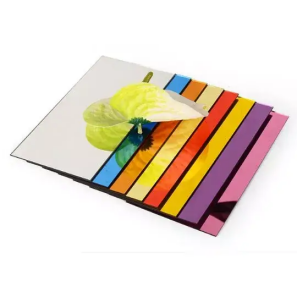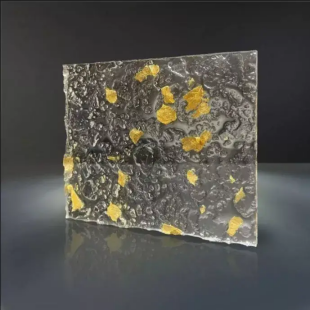Will alcohol corrode acrylic sheet?
2025-09-29
Acrylic sheet is widely used in advertising signs, display stands, and home decor due to its excellent light transmittance, ease of processing, and strong weather resistance. Many people use alcohol to remove oil stains or fingerprints during daily cleaning, but does alcohol corrode acrylic? This question isn't a simple yes or no; it requires a multifaceted analysis.

Interaction between Alcohol and Acrylic Sheet
Acrylic sheet is made of polymethyl methacrylate (PMMA), a thermoplastic. Its surface is hard and water-resistant, but its resistance to some organic solvents is limited. Alcohol, a common solvent, has a significant effect on acrylic depending on its concentration. Low-concentration medical alcohol generally doesn't corrode the surface of acrylic sheet due to its high water content and low solvent strength. However, long-term contact with industrial-grade high-purity alcohol (95%+) or alcohol wipes containing other chemical ingredients (such as fragrances or preservatives) may cause slight swelling or gloss loss on the acrylic sheet surface.

Key Factors of Damage
If only a brief wipe with diluted alcohol (concentration ≤ 75%) and immediate drying occurs, the acrylic sheet surface will remain largely unchanged. However, if high-concentration alcohol remains on the surface for an extended period, such as if spilled without prompt cleaning or repeated rubbing, it can damage the acrylic sheet's molecular structure, resulting in localized fogging, fine cracks, or a sticky feel. Low-quality acrylic sheet, particularly due to the inclusion of recycled materials or additives, has poor chemical resistance and can be accelerated by alcohol exposure.
Safe Cleaning Tips
Daily Dust Removal: First, use a soft-bristled brush or electrostatic duster to remove surface particles, avoiding scratching.
Common Stains: Gently wipe with a slightly damp cotton cloth dipped in a neutral detergent, rinse with clean water, and dry.
Stubborn Stains: If necessary, use 75% medical alcohol. Apply sparingly, wipe quickly, and immediately blot any remaining liquid with a dry cloth.
Strictly avoid using cleaning agents containing strong acids or bases, as these can quickly dissolve the acrylic surface.
| Aspect | Key Information | Damage Severity | Recommendation |
|---|---|---|---|
| Material Composition | Acrylic is PMMA thermoplastic | Limited solvent resistance | Avoid prolonged solvent contact |
| Alcohol Types | Medical alcohol ≤75% generally safe | Low risk with brief contact | Use diluted medical grade |
| Industrial grade ≥95% risks damage | Causes swelling gloss loss | Avoid high purity alcohol | |
| Wipes with additives increase danger | Accelerates degradation | Use plain alcohol solutions | |
| Damage Factors | High concentration exposure | Molecular structure damage | Wipe immediately after cleaning |
| Extended liquid contact | Localized fogging cracks | Never allow pooling of alcohol | |
| Abrasive rubbing | Surface stickiness | Use gentle wiping motion | |
| Low quality recycled acrylic | Poor chemical resistance | Select virgin material sheets | |
| Cleaning Procedure | Daily dust soft brush removal | Prevents scratches | Perform before wet cleaning |
| Common stains neutral detergent solution | Safe effective cleaning | Rinse thoroughly after washing | |
| Stubborn stains minimal 75% alcohol | Apply sparingly fast wipe | Immediate dry cloth blotting | |
| Risk Agents | Acid base cleaners | Rapid surface dissolution | Strictly prohibited |
| Acetone ammonia solvents | Permanent damage | Never use on acrylic |






